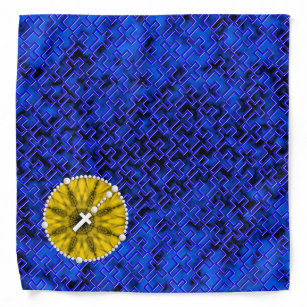Dream Catcher Catholic 3,9/5 6401 reviews
The original dream catchers come from Native American culture; today’s associations with the dream catcher are similar. According to modern legends, pleasant dreams catch in the ringed web and float along the ribbons to give you happy dreams and a restful night's sleep. Today's contemporary designs may showcase dainty ribbons, lush colors.
Today at school we made our own dream catchers with Miss Holmes! St Joseph’s Catholic Primary School Commerell Street East Greenwich London SE10 9AN. If a christian assigns any meaning to the dream catcher, of course they could find it evil. The thing is, it ain't no more evil than them little dolphins or teddy bears in other crib mobiles.BUT.
I’m not sure if she was solving multiplication problems with the Checkerboard or working in Read Naturally when I called her over. I noticed she took a deep breath and had that faraway look in her eyes, but she shook herself, stood up, and made it over to my u-shaped table. Then, I handed it to her. She knew exactly where to look and how to interpret the information. When I saw a shine in her hazel brown eyes, I knew she understood. She scored Proficient on our district level assessment. In fact, almost Highly Proficient. She looked at me and smiled. It was in that moment that the little girl who started the year saying she was afraid of math (and proved it with a score of Minimally Proficient) realized that being afraid and being unable were two different things. With a 282 point growth, she was no longer afraid of math. She was more than Proficient. She was a Dream Catcher. In that moment, she was my hero.


Mia did not have a straight line to success. Her journey included several highs and lows along the way. In 1st grade, she squirreled around with her peers, tasting knowledge and sampling lessons. When something was a challenge, she would pull away. As a 2nd grader, I watched her hide her aversion to math with pretty smiles, stomach aches, and tons of “group work”. In 3rd grade, we dealt with it head-on. No excuses. No hiding. We did it scared and realized that numbers did not bite. I presented the lessons and she practiced. When it was hard, she tried to run and I brought her back with a reminder of her brilliance. When she forgot I taught her again and held her accountable to write out her notes for future reference. Initially, I let her work with peers and the group’s success was her success. Then I began to call her aside and sat near her as she began to trust her own mind. She looked to me to validate her answers and guide her through corrections. With time, she began to check her own work with the class materials. She increased with accuracy and eventually she was able to guide others. By the end of 3rd grade, she owned her experience. She was an active partner in her education. She realized that she was a mathematician and could do “hard” math.
Dreamcatcher Catholic
Mia’s journey is not uncommon in my class. It is not even the most dramatic. In fact, by the end of the 3-year cycle, this type of story is typical in a Montessori classroom. What is not common is that this Montessori class is held in a free, publicly funded school in the heart of Central Phoenix (Arizona). During a time when we are all wondering what can be done to bring about sustainable and impactful change, I offer up the consideration of Montessori education at the public level. Although most that are aware of the Montessori philosophy view it as an exclusive educational approach reserved for the well-off, this is not the case. Dr. Montessori, a scientist, began her approach in response to observations that she made of children with mental and physical disadvantages. She then expanded her research to include children living in poverty. Her philosophical approach, lessons, and materials were based on these observations, and it was the phenomenal outcomes that gained the attention of the world, including the elite. Yet, the truth about Montessori is that it is an appropriate choice for public education because it is based on the natural development of the child from birth to young adulthood. This includes the child sitting in the public classroom. Since we must allocate public funding for education, let’s invest our tax dollars in purposeful education and teacher training that unleashes the human potential.
For additional information on how to become a Montessori teacher or to learn more about the impact that Montessori is having in public education, check out the following websites:
Association Montessori International: https://amiusa.org/

Dream Catcher Catholic Teaching
National Center for Montessori in the Public Sector (NCMPS) http://www.public-montessori.org/
Are Dream Catchers Bad
MontessoriPublic (newspaper): http://www.montessoripublic.org/
Yolanda Wheelington

Interesting essay samples and examples on: https://essays.io/questionnaire-examples-samples/

Question:
Should Catholics have or make Native American dreamcatchers? Should we accept this type of craft for a silent auction for the expansion of our church?
Answer:
Dream Catcher Catholic
Displaying a dreamcatcher in a home is not a problem, assuming it is used solely for decorative purposes. If your church wishes to make clear that it is not encouraging use of dreamcatchers for any other purposes, the person who wishes to donate a dreamcatcher to your silent auction could be asked to tag it with a label stating, “Offered for decorative purposes only.”
Related
Enjoying this content?Please support our mission!Donate